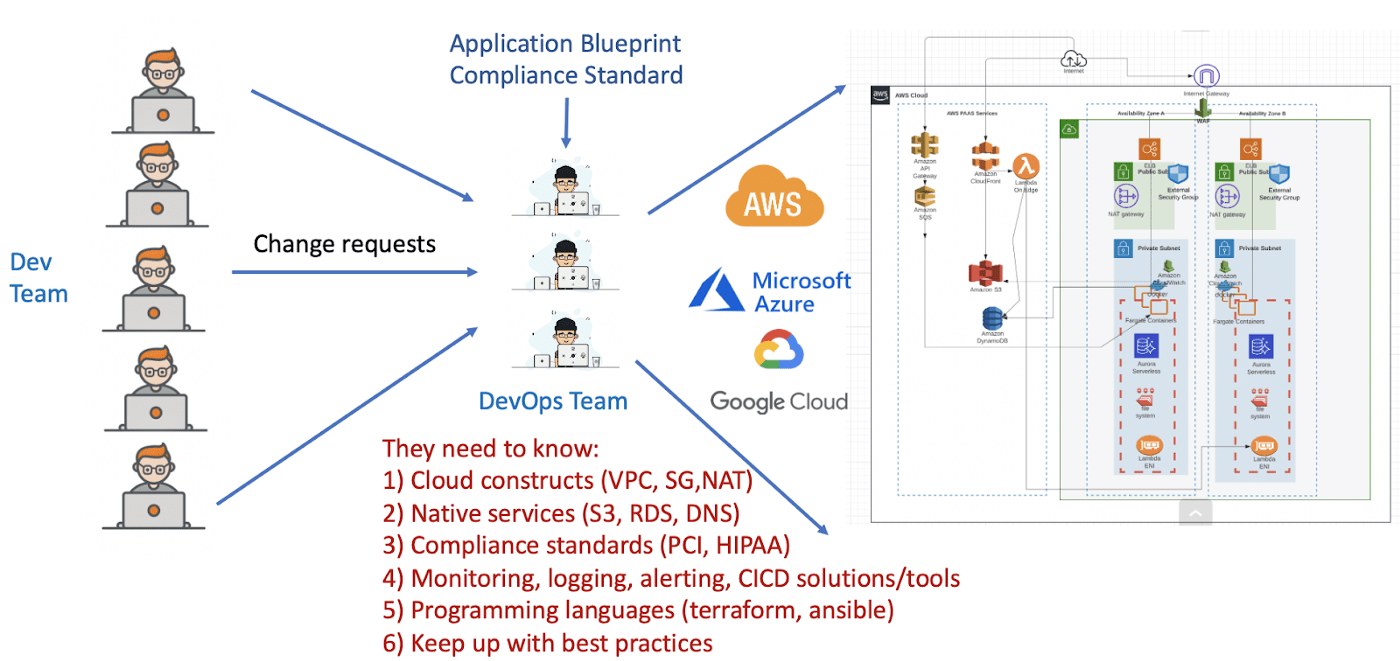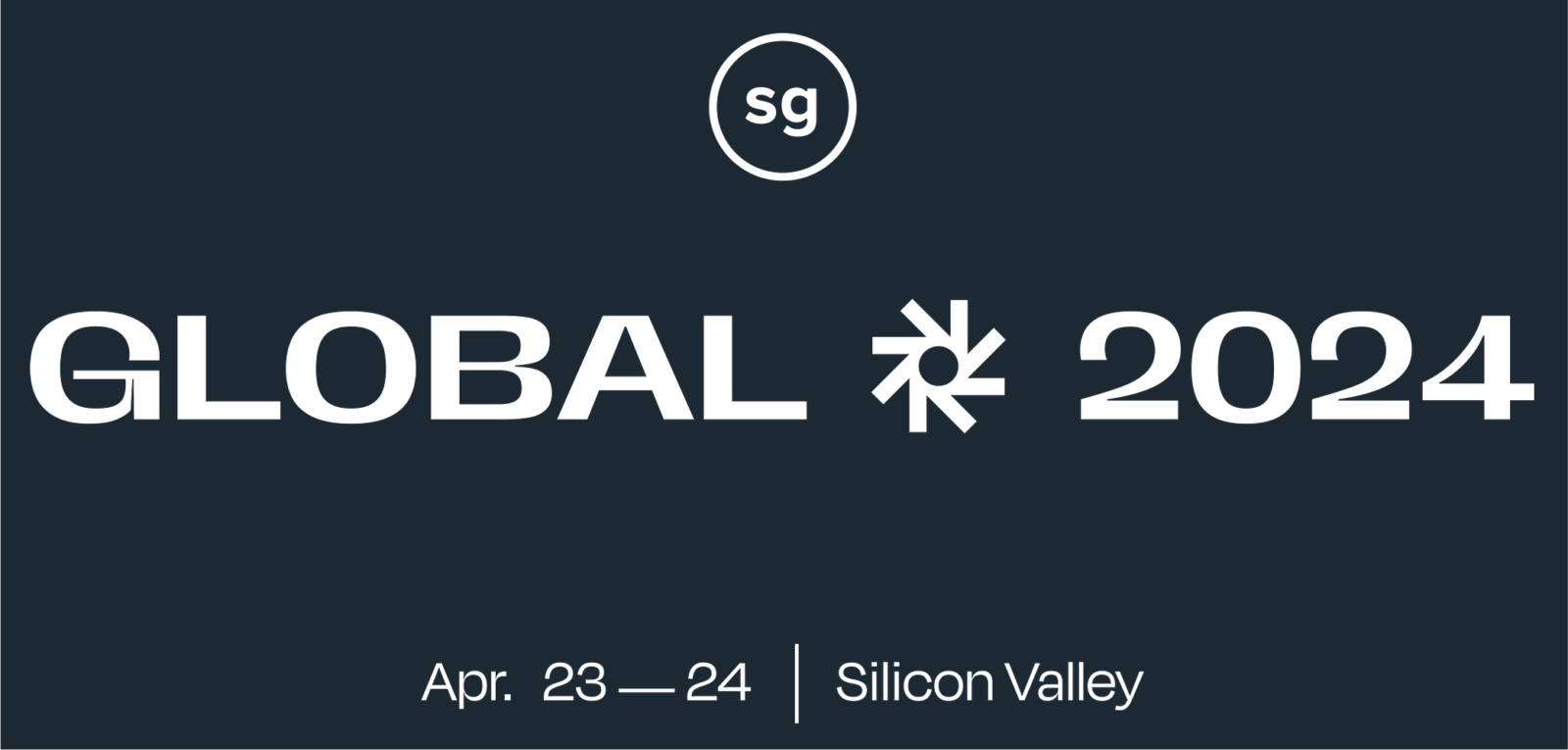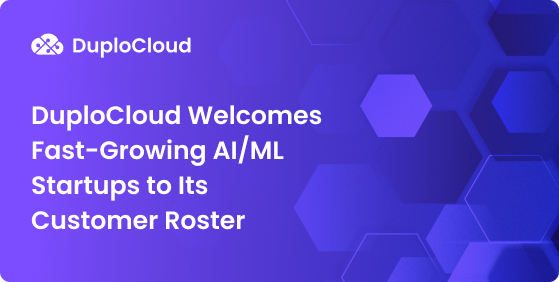Two major shifts are happening across all industries today:
- Infrastructure is moving to cloud and becoming 100% software driven
- Applications are getting more fragmented and agile
As seen by the increased adoption of public clouds, most enterprises are beginning to move towards a cloud based infrastructure where deployments are 100% software driven and underlying resources are becoming quite standardized. In fact, most cloud vendors even have a very similar nomenclature for resources when it comes to their global infrastructure in terms of VMs, Networking and Volumes.
On the other hand, applications are becoming a combination of micro-services using containers, managed applications for databases, messaging, key-value stores, NoSQL stores, Lambda functions and object stores. For developers, it has become easier to build more complex applications that can work at scale using a lot of off the shelf components and services. While all this provides great flexibility and agility in terms of application development, it comes at a cost of requiring more skilled DevOps and SecOps people to stitch everything together and make services work at scale.
Growing Need For DevOps
Today, everything from infrastructure to apps to CI/CD is driven by DevSecOps.
In the new cloud environments, the legacy ways of doing things are no longer viable. Everything is highly decentralized and needs to be deployed per application instead of at the periphery as in the case of traditional data-centers. DevOps and Cloud are in the top 10 of most in-demand technical skills. As a result, every company is looking for DevOps and SecOps experts. For example, Cloud Computing has remained the first our second most desired skill set in LinkedIn’s skills survey and currently we can see more than 55,000 job postings just for a “devops engineer” on LinkedIn.
Are you looking for DevOps engineers or struggling to automate and modernize your applications? Most of our customers said yes and now they are enjoying 10X faster automation, at 70% lower costs with 100% security and compliance. Let’s see how.
To solve this problem, first we asked ourselves: Why is this the case? It turns out that many enterprises and even smaller technical companies are facing the similar challenges:
- Finding good devops people is hard. It requires multiple skills including software development and operations.
- If you find them, they are expensive and hard to retain.
- The work needed requires multiple people as no one person has the breadth of skills to understand the whole infrastructure.
- Several point tools are used in addition to people to really put together everything that is required for an application lifecycle
The problem gets 10 times harder if you have to follow one or more compliance standards like PCI, HIPAA, SOC2, GDPR and so on. Now you need someone who also understands these compliance standards that are esoteric and written in a way that most people cannot understand. Even when you understand them, interpreting how this translates into actions and best practices to comply with the requirements is not easy.
Here is how most companies deal with these challenges today. Figure 1 below shows the workflow and expectations from a devops person using a public cloud like AWS.
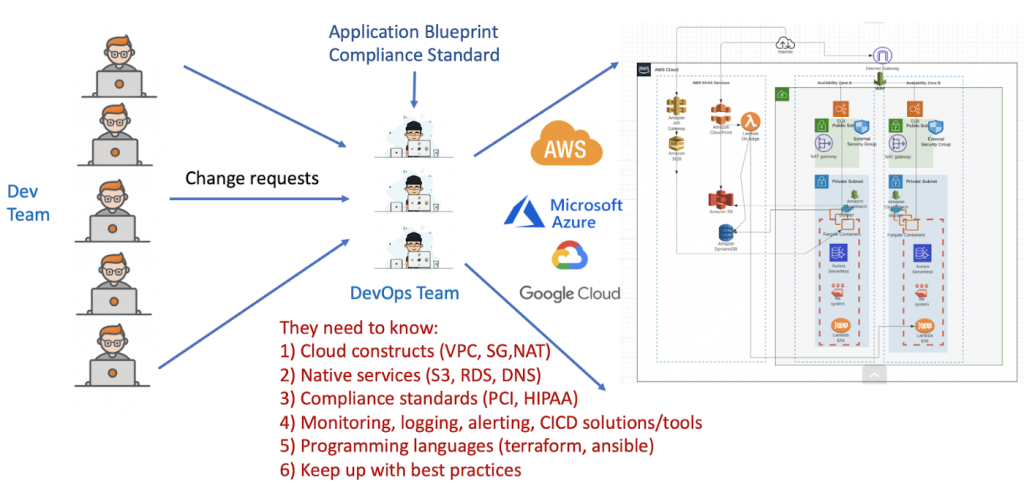
A DevOps person needs to understand a wide variety of items such as cloud constructs, compliance standards, tools for monitoring, logging, alerting, CI/CD, programming languages like terraform, ansible and also keep up with all the new developments and best practices.
So we asked ourselves the next obvious question: What does a typical DevOps person do and how much of that work can be automated?
A DevOps person does three things at a high level:
- Gets application blueprint from developers and automates deployment of the blueprint in a cloud.
- Follows compliance standards and puts processes in place about access control, updates, etc.
- Makes changes to existing environments based on new requirements, performance or capacity issues.
- Connects various tools for application monitoring, logging, alerting and CI/CD.
If you look at the tasks mentioned above, 70% to 100% of every task can be automated using an intelligent automation tool or a bot that understands cloud resources, managed applications, security, compliance controls and access controls. In fact, many of today's companies are already utilizing such tools. Read our free report to learn more:

DuploCloud: No-Code Approach To DevOps
At DuploCloud, we have built a DevOps Automation Platform that understands most of the cloud constructs and can be trained to pick up more in just a matter of 1–2 days. The bot also understands all the compliance standards and well architected principles. This bot is typically similar to a highly trained DevOps engineer with expertise in application deployment, infrastructure provisioning, security controls, compliance and tools.
But the bot is also different from an engineer in many ways:
- It works 24x7, with no breaks and no holidays!
- It can continuously monitor your infrastructure and send alerts when something fails.
- It can auto-generate a blueprint for your application for repeat deployments.
- It can auto-generate terraform code if you want to keep infrastructure-as-code as a backup.
Figure 2 shows what the new workflow looks like with DuploCloud.
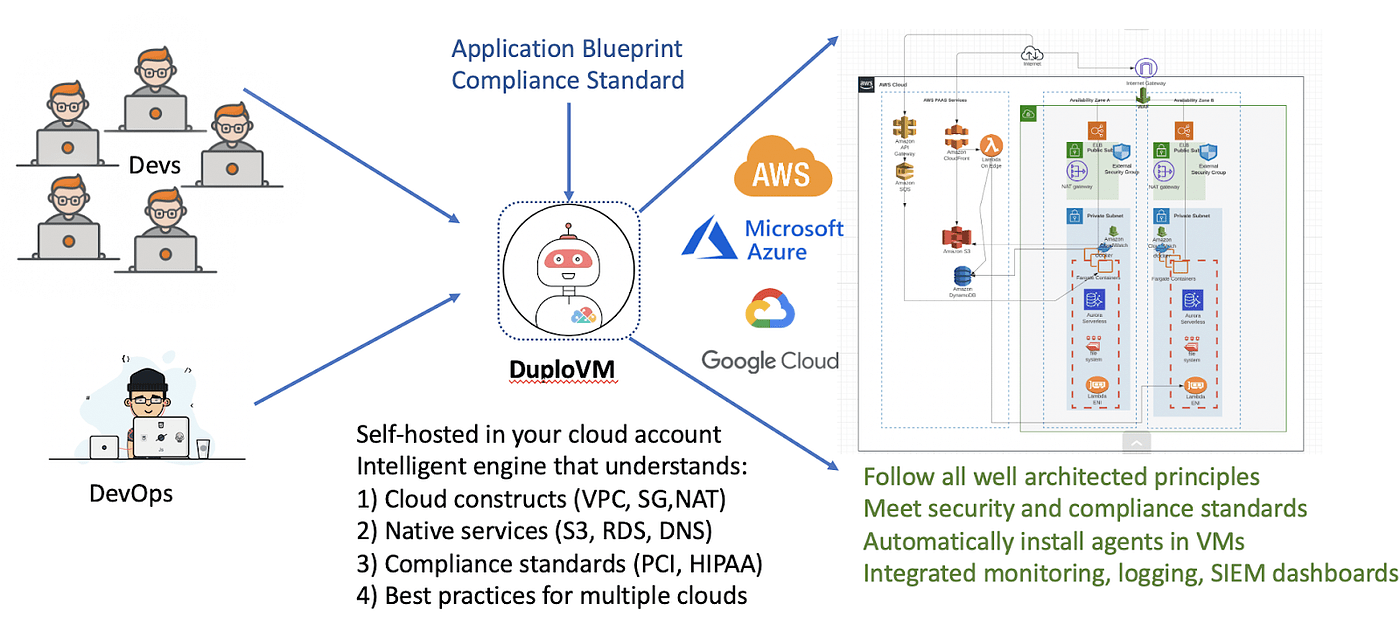
In this case, a self-hosted DuploVM is deployed in your cloud environment. This runs the automation bot and can take actions within your cloud account. You don’t have to enter your credentials in a SaaS platform. The developers use the Duplo UI to interact with the cloud, deploy any resources or make any changes. The DevOps team will interact both with Duplo UI and underlying cloud UI depending on the task. For example, a low level non-security related property of any resource can be changed directly using the cloud provider console.
Cloud + Edge/Datacenter Use Case
So far, we have talked about DevOps in public cloud environments. However, there are many cases where part of the workload needs to run on the edge. These deployments also need to be monitored, managed and upgraded. DuploCloud allows application provisioning across cloud and edge servers. It even allows edge servers to appear like cloud instances in terms of network access and IAM based roles so that workloads running there can directly access cloud services like S3, DynamoDB and others.
Figure 3 shows the overall benefits of using DuploCloud in a hybrid scenario including public clouds and edge servers.

Business Benefits
DuploCloud offers a No-Code approach to Devops and SecOps automation with the following key business benefits:
- 10X faster automation with guardrails
- Developers get self-service
- DevOps teams don’t have to play a ‘middleman’ role for small changes needed by developers
- No long wait times on tickets or terraform code to be written, tested and executed
- 100% security and compliance through prevention
- Bot understands compliance standards and know what needs to be done for each control at the very beginning
- Security related controls are hidden from developers
- Rich set of controls and cost awareness
- Expert understanding of multiple clouds and applications
- Support to apply quota per project
- Project level cost awareness and optimizations
In customers, large and small, we are able to provide these benefits and improve the overall productivity of the team. We obviate the need to hire a lot of DevOps engineers and are able to to improve the management of infrastructure from a ratio of ~50 VMs to 1 engineer to ~250 VMs per DevOps engineer.
Markets Served And Use Cases
We are currently serving three different types of customers: SMBs, Enterprises and MSPs. Table 1 below shows the key use cases we provide and the pain points we solve for them.

Conclusion
Every company is going through a digital transformation with a focus on moving to public clouds and achieving faster application delivery. With the growing demand for devops expertise, many enterprises are struggling to fill in all the open positions to achieve the desired business goals. The skills shortage is slowing down overall application modernization, cloud migration and automation projects which are critical for both business growth and to remain competitive.
DuploCloud provides a new no-code-based approach to DevOps automation. With several dozen customers across SMBs, enterprises and MSPs, we can show productivity improvements across their teams. They are able to do a lot more with a lot less, such that in-house DevOps teams can focus more on other application-related improvements instead of worrying about infrastructure, security, and compliance. The three key advantages of using DuploCloud are:
- 10X faster automation
- 100% secure and compliant application deployment
- 70% less cloud operating costs
If you think these metrics can help your business, feel free to reach out! You can reach us at info@duplocloud.net, or check out www.duplocloud.com for more helpful content.



